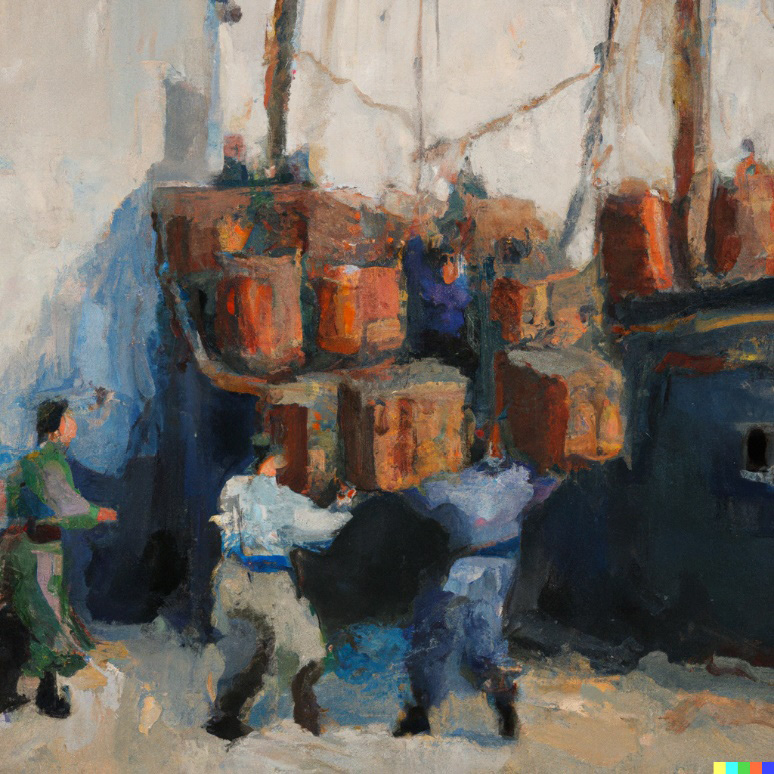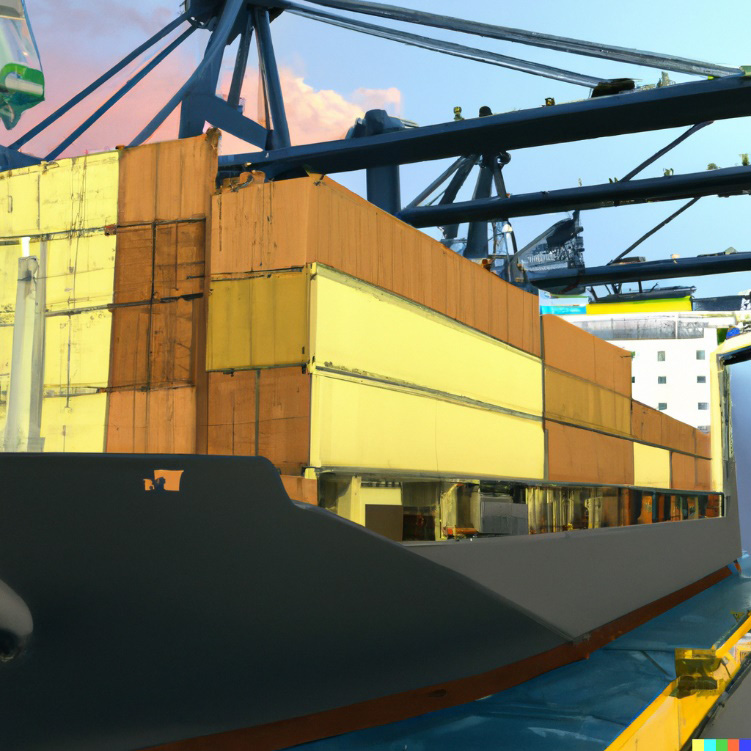What are containers?
A software container is a pretty abstract thing, so it might help to start with an analogy that should be pretty familiar to most of you. The analogy is a shipping container in the transportation industry. Throughout history, people have transported goods from one location to another by various means. Before the invention of the wheel, goods would most probably have been transported in bags, baskets, or chests on the shoulders of humans themselves, or they might have used animals such as donkeys, camels, or elephants to transport them. With the invention of the wheel, transportation became a bit more efficient as humans built roads that they could move their carts along. Many more goods could be transported at a time. When the first steam-driven machines, and later gasoline-driven engines, were introduced, transportation became even more powerful. We now transport huge amounts of goods on planes, trains, ships, and trucks. At the same time, the types of goods became more and more diverse, and sometimes complex to handle. In all these thousands of years, one thing hasn’t changed, and that is the necessity to unload goods at a target location and maybe load them onto another means of transportation. Take, for example, a farmer bringing a cart full of apples to a central train station where the apples are then loaded onto a train, together with all the apples from many other farmers. Or think of a winemaker bringing their barrels of wine on a truck to the port where they are unloaded, and then transferred to a ship that will transport those barrels overseas.
This unloading from one means of transportation and loading onto another means of transportation was a really complex and tedious process. Every type of product was packaged in its own way and thus had to be handled in its own particular way. Also, loose goods faced the risk of being stolen by unethical workers or damaged in the process of being handled.

Figure 1.1 – Sailors unloading goods from a ship
Then, containers came along, and they totally revolutionized the transportation industry. A container is just a metallic box with standardized dimensions. The length, width, and height of each container are the same. This is a very important point. Without the world agreeing on a standard size, the whole container thing would not have been as successful as it is now. Now, with standardized containers, companies who want to have their goods transported from A to B package those goods into these containers. Then, they call a shipper, who uses a standardized means of transportation. This can be a truck that can load a container, or a train whose wagons can each transport one or several containers. Finally, we have ships that are specialized in transporting huge numbers of containers. Shippers never need to unpack and repackage goods. For a shipper, a container is just a black box, and they are not interested in what is in it, nor should they care in most cases. It is just a big iron box with standard dimensions. Packaging goods into containers is now fully delegated to the parties who want to have their goods shipped, and they should know how to handle and package those goods. Since all containers have the same agreed-upon shape and dimensions, shippers can use standardized tools to handle containers; that is, cranes that unload containers, say from a train or a truck, and load them onto a ship and vice versa. One type of crane is enough to handle all the containers that come along over time. Also, the means of transportation can be standardized, such as container ships, trucks, and trains. Because of all this standardization, all the processes in and around shipping goods could also be standardized and thus made much more efficient than they were before the introduction of containers.

Figure 1.2 – Container ship being loaded in a port
Now, you should have a good understanding of why shipping containers are so important and why they revolutionized the whole transportation industry. I chose this analogy purposefully since the software containers that we are going to introduce here fulfill the exact same role in the so-called software supply chain as shipping containers do in the supply chain of physical goods.
Let’s then have a look at what this whole thing means when translated to the IT industry and software development, shall we? In the old days, developers would develop new applications. Once an application was completed in their eyes, they would hand that application over to the operations engineers, who were then supposed to install it on the production servers and get it running. If the operations engineers were lucky, they even got a somewhat accurate document with installation instructions from the developers. So far, so good, and life was easy. But things got a bit out of hand when, in an enterprise, there were many teams of developers that created quite different types of applications, yet all of them needed to be installed on the same production servers and kept running there. Usually, each application has some external dependencies, such as which framework it was built on, what libraries it uses, and so on. Sometimes, two applications use the same framework but of different versions that might or might not be compatible with each other. Our operations engineers’ lives became much harder over time. They had to become really creative with how they loaded their ships, that is, their servers, with different applications without breaking something. Installing a new version of a certain application was now a complex project on its own, and often needed months of planning and testing beforehand. In other words, there was a lot of friction in the software supply chain.
But these days, companies rely more and more on software, and the release cycles need to become shorter and shorter. Companies cannot afford to just release application updates once or twice a year anymore. Applications need to be updated in a matter of weeks or days, or sometimes even multiple times per day. Companies that do not comply risk going out of business due to the lack of agility. So, what’s the solution? One of the first approaches was to use virtual machines (VMs). Instead of running multiple applications all on the same server, companies would package and run a single application on each VM. With this, all the compatibility problems were gone, and life seemed to be good again. Unfortunately, that happiness didn’t last long. VMs are pretty heavy beasts on their own since they all contain a full-blown operating system such as Linux or Windows Server, and all that for just a single application. This is as if you used a whole ship just to transport a single truckload of bananas in the transportation industry. What a waste! That would never be profitable. The ultimate solution to this problem was to provide something much more lightweight than VMs also able to perfectly encapsulate the goods it needed to transport. Here, the goods are the actual application that has been written by our developers, plus – and this is important – all the external dependencies of the application, such as its framework, libraries, configurations, and more. This holy grail of a software packaging mechanism is the Docker container.
Developers package their applications, frameworks, and libraries into Docker containers, and then they ship those containers to the testers or operations engineers. For testers and operations engineers, a container is just a black box. It is a standardized black box, though. All containers, no matter what application runs inside them, can be treated equally. The engineers know that if any container runs on their servers, then any other containers should run too. And this is actually true, apart from some edge cases, which always exist. Thus, Docker containers are a means to package applications and their dependencies in a standardized way. Docker then coined the phrase Build, ship, and run anywhere.























































